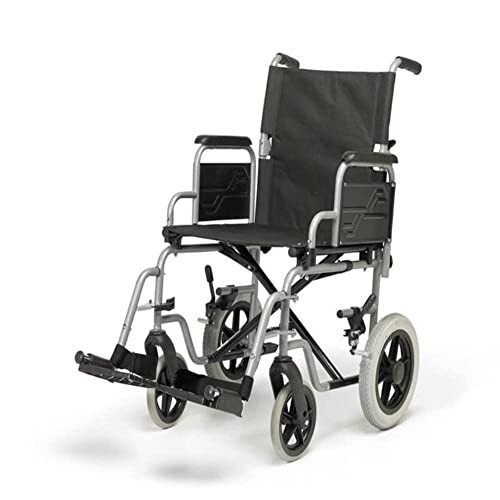A Look At The Future What Will The Mobility Scooter Industry Look Like In 10 Years?
A Comprehensive Guide to Buying a Mobility Scooter
Mobility scooters have actually ended up being an essential tool for lots of individuals wanting to improve their independence and mobility. With a huge array of designs and features available, selecting the best mobility scooter can be daunting. visit the up coming internet site offers an informative guide to assist customers navigate their choices, evaluate their requirements, and make a notified purchase.
Understanding Mobility Scooters
Mobility scooters are electric lorries developed for people who experience mobility difficulties. They are particularly advantageous for elders, those with impairments, or people recovering from injuries. Mobility scooters can vary widely in terms of style, features, and prices.
Kinds Of Mobility Scooters
Before starting a purchase, it's vital to comprehend the various kinds of mobility scooters readily available:
Three-Wheel Scooters:
- Generally more maneuverable in tight spaces
- Lightweight and portable
- Suitable for indoor usage
Four-Wheel Scooters:
- Offer higher stability and balance
- Suitable for outdoor use over various surfaces
- Usually have a longer battery life
Foldable/Portable Scooters:
- Designed to be quickly transferred and stored
- Can frequently fit in the trunk of a cars and truck
- Ideal for those who travel often
Heavy-Duty Scooters:
- Built to accommodate bigger people
- Frequently featured more robust features for outside usage
- Typically equipped with bigger batteries for extended variety
Factors to Consider When Buying a Mobility Scooter
1. Weight Capacity
Select a mobility scooter that can support the user's weight. Most scooters have a weight limitation ranging from 250 to 500 pounds. It is vital to guarantee that the scooter can accommodate the user comfortably.
2. Variety and Battery Life
The variety is how far the mobility scooter can take a trip on a single charge. Common varieties vary between 10 to 30 miles. Consider the user's everyday activities and select a scooter with an appropriate range.
3. Scooter Dimensions
Consider the size of the scooter, including its weight and measurements. A more compact scooter may be perfect for narrow corridors and tight spaces, while larger models offer additional stability and convenience.
4. Surface Capability
Assess where the scooter will primarily be utilized. If the user plans to take a trip primarily on pavement, a lightweight design might be enough. However, if the user needs to traverse gravel or unequal surfaces, think about a four-wheel scooter built for off-road usage.
Leading Features to Look For
Convenience
- Adjustable Seats: Look for scooters with cushioned and height-adjustable seats to guarantee convenience throughout travel.
- Armrests: These enhance safety and assistance while navigating.
Safety and Visibility
- Headlights and Taillights: Essential for nighttime use.
- Turn Signals and Reflectors: Improve exposure and security while on the road.
User-Friendly Controls
- Joystick or Drive Controls: These ought to be intuitive and simple to control.
- Easy-to-Read Displays: A control board that shows battery life, speed, and distance can improve the user experience.
Extra Features
- Storage Compartments: These use added benefit for carrying personal products while on the go.
- Weather condition Protection: Consider designs with rain covers or windscreens if used in variable weather.
Expense Considerations
When budgeting for a mobility scooter, costs can range anywhere from ₤ 500 to over ₤ 5,000 depending upon the model, features, and brand name. Additional costs may consist of:
- Extended Warranty: Protects against defects and can conserve money in the long run.
- Accessories: Optional features, such as upgraded seats, lights, or storage options.
Function
Cost Range
Fundamental Models
₤ 500 – ₤ 1,500
Mid-Range Models
₤ 1,500 – ₤ 3,000
High-End Models
₤ 3,000 – ₤ 5,000
Financing Options
Many retailers use financing plans, and some local federal government initiatives might supply grants or assistance for those in requirement. Examine potential monetary support with community resources or mobility service organizations.
Frequently asked questions about Buying a Mobility Scooter
What is the distinction between a mobility scooter and a wheelchair?
Mobility scooters are motorized and permit users to navigate independently, while wheelchairs might require physical support or manual operation.
How do I keep a mobility scooter?
Routine upkeep involves inspecting battery life, cleaning up the scooter, and checking tires and brakes. Constantly refer to the user handbook for particular standards.
Can mobility scooters be utilized inside?
Yes, lots of designs are designed for both indoor and outdoor use. Nevertheless, three-wheel scooters tend to be better matched for indoor navigation due to their tighter turning radius.
Are mobility scooters covered by insurance?
Some insurance coverage prepares cover a part of the expenses for mobility scooters if they are deemed clinically necessary. Contact your company for particular details.
How quick can a mobility scooter go?
Most mobility scooters have a maximum speed ranging from 4 to 8 mph. However, the suitable rate may vary depending on regional guidelines.
Buying a mobility scooter can considerably boost one's self-reliance and lifestyle. By understanding the types, functions, and costs connected with mobility scooters, prospective buyers can make well-informed choices that match their needs and preferences. Personalization and comprehensive research are key to guaranteeing complete satisfaction with this crucial financial investment.
